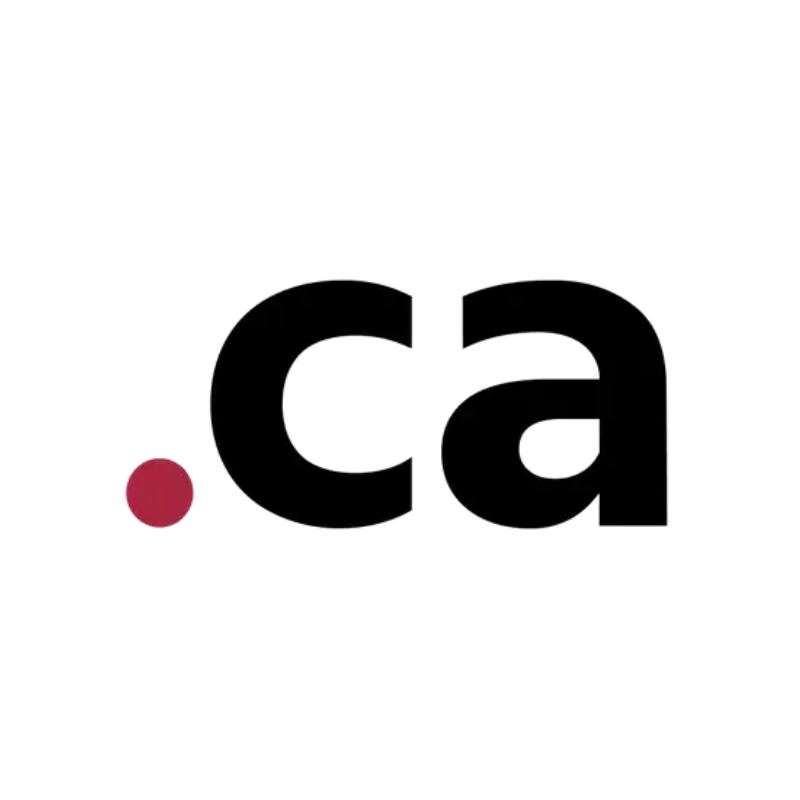Your ideal domain name is finally available.
You’re ready to secure it before someone else does, but a small voice tells you:
“Wait, did I forget something important?”
That pause could save you serious time and money.
Registering a .CA domain comes with unique requirements and long-term considerations that many people overlook.
Missing one small step could cost you ownership rights, bring unexpected fees, or lead to the loss of your online identity.
This checklist walks you through seven essential checks to make before completing your registration:
- Confirming true availability
- Calculating real long-term costs
- Meeting Canadian eligibility requirements
- Maintaining full ownership and privacy
- Ensuring smooth renewals and transfers
Let’s go through each one.
- Is the Domain Name Truly Available Everywhere?
Found your perfect domain? Great, but before you celebrate, dig a little deeper by:
Looking Beyond the .CA Extension
Check the same name under other extensions like, .com, .net, and.org.
Why? Because even if your .CA is free, someone else might already own the .com version, and that could divert traffic or create confusion later.
Guarding it Against Misspellings and Variations
If your business name can be spelled in different ways, check those versions too. Registering common variations helps prevent traffic loss to lookalike domains or opportunistic squatters.
Having Backup Options Ready
Domain availability changes fast. While you’re filling out registration forms, someone else could claim your choice. Always have three to five solid backup names ready before you begin.
Confirm your preferred name and close variations are available across multiple extensions before proceeding.
2.) What Are You Actually Paying Long-Term?
That “$12.99 first-year deal” looks great, until renewal time comes around.
Some registrars lure you with cheap introductory rates, then quietly charge three or four times more when it’s time to renew.
By then, your domain is tied to your website, email, and branding.Then, switching becomes a hassle.
To avoid this hassle, calculate the Real Multi-Year Cost using this formula:
(Annual renewal rate × 3) + First-year price = 3-year total
From there compare across registrars. The cheapest first-year price rarely offers the lowest total cost.
You can then decide if you want to consider Multi-Year Registration.
Registering for several years upfront often gives discounts of 10–30%, locks in current pricing, and eliminates the risk of accidental expiration.
Compare 3-year and 5-year costs, not just first-year pricing, before choosing your registrar.
3) Do You Meet Canadian Presence Requirements?
To own a .CA domain, you must have a verified Canadian connection, a rule set by Canadian Internet Registration Authority(CIRA).
To qualify, you must be one of the following:
- A Canadian citizen or permanent resident
- A business registered in Canada federally or provincially
- An organization with a registered Canadian trademark
These requirements ensure .CA domains remain genuinely Canadian.
Before you start, if you are an individual carry with you a valid Canadian ID. If you are an organization, bring proof of business registration.
Also ensure your name and address details match across all documents.
Common reasons for rejection include name mismatches, expired registrations, or incomplete documentation.
Verify all documents are current, legible, and match exactly before applying.
4.) Will You Maintain Direct Control?
Many business owners lose domain access simply because they let someone else register it on their behalf.
If a web developer or agency registers your domain under their account, they technically own it, not you. If the relationship ends, you could lose access.
Register your domain using your own account and email address.
Then, grant developers limited access for technical setup like DNS, but never hand over ownership credentials.
After registration, double-check and confirm that:
- The domain appears in your own account dashboard
- Your contact email is listed as the primary administrator
- You have the authorization (EPP) code saved securely
Always register and manage your domains under your direct control, never delegate ownership.
5.) Have You Set Up Renewal Safeguards?
Even established businesses lose domains due to simple oversights which are usually as a result of expiry.
Common causes of expiry include:
- Renewal reminders landing in spam
- Outdated contact details
- Expired payment cards
- Forgetting to renew during busy seasons
Registrars don’t chase you for renewals. If your domain expires, it can be resold quickly. Therefore you need to protect yourself from these situations by:
- Turning on auto-renew if available
- Adding calendar reminders at 60, 30, and 0 days before expiry
- Keeping payment details current
- Registering for multiple years if possible
Set up at least three separate reminders or safeguards right after registering your domain.
6.) Will Your Personal Information Stay Private?
Domain registration records (WHOIS) can expose your personal contact details such as name, email, address, and phone number to the public.
Without privacy protection, your data could be collected by spammers, telemarketers, and scammers.
With the privacy protection also known as the Domain Privacy, you can protect your data.
This feature replaces your real contact information with your registrar’s proxy details.
You’ll still receive messages through a secure channel, but your personal data stays hidden.
Therefore check the cost to be on the safe side because some registrars include privacy for free, while others charge around $10–$30 per year. Always verify if it’s included before registering.
Choose a registrar that includes privacy protection or offers it at a reasonable rate, and activate it during registration
7.) Can You Transfer the Domain Later If Needed?
You may want to move to a better registrar in the future. That’s why it’s important to know the transfer policy before you register.
Look for registrars with Transparent Transfer Policies and confirm that they:
- Provide easy access to the authorization (EPP) code
- List clear transfer procedures
- Don’t charge unreasonable transfer fees
Stay away from registrars that make transfers complicated or delay EPP code requests. If reviews mention ownership or exit issues, consider another provider.
Read your registrar’s transfer policy before committing, flexibility now saves frustration later.
Final Pre-Registration Checklist
Before clicking “Register,” make sure you’ve checked for:
- Domain Availability:Checked across all major extensions and variations
- Transparent Pricing: Compared 3-year totals, not just first-year promos
- Eligibility: All Canadian documentation prepared and consistent
- Ownership: Domain will be registered under your account
- Renewal: Auto-renew enabled, reminders set, payment updated
- Privacy: WHOIS protection included or affordable
- Transferability: Registrar offers easy, low-cost transfers
Register With Confidence
These seven checks take less than an hour — but they prevent costly mistakes, ownership disputes, and unnecessary stress later.
Instead of rushing to buy the first domain that’s available, take a moment to confirm every detail.
When you finally hit “Register,” you’ll do so knowing your .CA domain is secure, compliant, and fully under your control.
Your domain is the foundation of your online presence. Start it right, and it will serve your business for years to come.
 cPanel Web HostingAffordable Canadian cPanel hosting, user-friendly and reliable.
cPanel Web HostingAffordable Canadian cPanel hosting, user-friendly and reliable. Reseller HostingStart your own hosting business with flexible reseller hosting plans.
Reseller HostingStart your own hosting business with flexible reseller hosting plans. Affiliate ProgramJoin our affiliate program and earn commissions by referring customers.
Affiliate ProgramJoin our affiliate program and earn commissions by referring customers. DomainsFind the perfect domain for your business or personal site with ease.
DomainsFind the perfect domain for your business or personal site with ease. Domain TransferTransfer your domain to us and keep your website running without interruption.
Domain TransferTransfer your domain to us and keep your website running without interruption. WHOIS LookupQuickly find who owns a domain with our easy WHOIS search tool.
WHOIS LookupQuickly find who owns a domain with our easy WHOIS search tool. VPS HostingReliable VPS hosting crafted for performance and peace of mind.
VPS HostingReliable VPS hosting crafted for performance and peace of mind.
